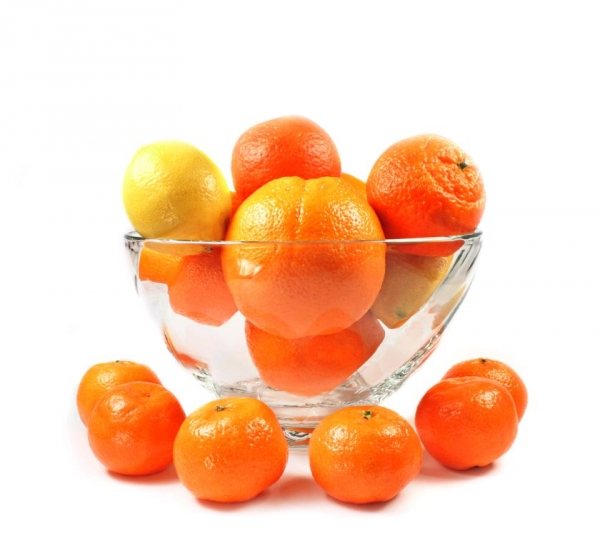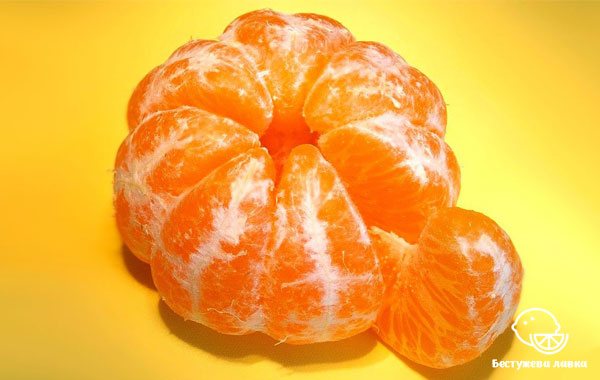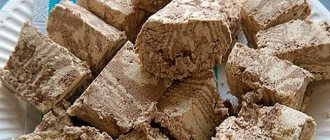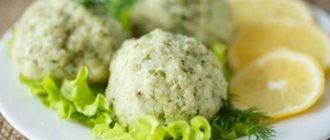Tangerine benefits
In addition to the sweet taste and appetizing aroma, tangerines contain enormous benefits. These “New Year’s seeds” protect children’s and adult health, and here’s why:
- Tangerines are a real treasure of vitamins A, C, D, PP and group B. This beneficial combination is complemented by potassium, calcium and phosphorus.
- This fruit is an effective antidepressant, and it’s not just the bright color. “Thank you” can be said to special essential oils. A child who loves tangerines will be active and cheerful.
- Citrus fruits are always associated with the fight against colds. Despite the leadership of lemons, tangerines also occupy an honorable position on the pedestal of healthy fruits. Tangerine juice has a phytoncidal effect, so it is a godsend during the peak of viral diseases and during the recovery period.
- Love for these citrus fruits ensures healthy glucose levels, excellent intestinal function and metabolic processes.
- Tangerine does not irritate the mucous membranes in the mouth, which cannot be said about its brothers orange and grapefruit.
- The minimum number of calories makes the fruit a dietary and permitted treat for overweight children.
- One cannot but rejoice in the beneficial effect on digestion due to the large amount of fiber.
Vitamin composition of tangerines
Like any other citrus fruit, tangerines contain a lot of ascorbic acid, and we already know how important it is, especially for a child. In the complex system of assimilation and absorption of iron, necessary for the formation of hemoglobin protein, vitamin C plays a leading role - without it, iron is absorbed much worse, which can lead to anemia. Ascorbic acid does not accumulate in the body, which means that for the normal development and well-being of a child, his diet must contain enough foods rich in vitamin C.
Vitamin C decomposes when heated, prolonged storage, or freezing, but thanks to a specific combination of minerals, it lasts longer in tangerines than, for example, in lemons and oranges. Thanks to citric acid, nitrates practically do not penetrate into the sweet and sour pulp of tangerines
The juice and pulp contain a whole bunch of nutrients - vitamins A (beta-carotene), almost all B vitamins (folic acid, riboflavin, thiamine and others). Potassium, which is abundant in tangerines, helps strengthen muscle tissue and normalizes intestinal motility; the pulp of the fruit contains calcium, magnesium, phosphorus and even a little iron. The important thing is that the vitamin and mineral composition is so balanced that even a small amount is compensated by the correct interaction of all substances.

Photo: Fotolia
Everything is not so sweet
In addition to containing valuable components, tangerine for children can sometimes still be suspicious for the following reasons:
- The main “but” of citrus is its high ability to provoke allergies.
- Another danger is the rather generous sugar content, so children with diabetes will have to avoid it.
- Tangerine contains organic acids, so it should be eaten with caution by children with high stomach acidity.
About contraindications
No matter how tasty tangerine is, it is not suitable for all kids. Children with the following diagnoses will have to be given a different fruit:
- intolerance to citrus fruits;
- gastritis;
- stomach ulcer;
- nephritis;
- diabetes;
- cholecystitis;
- hepatitis.
From small to large
Every mother wonders at what age can you give tangerines to your child. When you and your baby walk past the fruit shelves in the supermarket, orange citrus fruits will certainly attract his attention. That’s when the question arises: when can you give them to him for testing?
At what age can you safely give tangerine to your baby? If you are concerned about how many months you can treat your baby to a bright fruit, then the age limit is usually 1 year. If you decide to give your child a couple of slices before he is one year old, you risk experiencing allergy symptoms or poisoning. The baby cannot boast of a developed enzyme system, so it will be difficult for him to tolerate tangerine.
At one year of age, it is already possible to gain courage and gradually give tangerines to children. A one-year-old child, if he has not had allergic reactions to other products, should tolerate citrus well. But some pediatricians (including the famous doctor Evgeny Komarovsky) believe that 1 year is too early an age to get acquainted with the controversial fruit and advise waiting until 1.5 years. If the baby was allergic to any product, then he can try tangerine only from the age of 3.
As for the size of portions, a child aged 1 year should not be offered more than 1-3 slices, and only at the age of 7 can a child eat several fruits.
Where do we start?
Feeding with citrus should occur gradually. We recommend starting with tangerine juice and half water. After such a first acquaintance, carefully monitor the reaction. If everything went well, next time offer your child 1 cut piece of fruit.
If the baby’s teeth do not yet allow him to fully chew a tangerine, then show him how the pulp can be sucked and the excess fibers can be thrown away. Children often like this method the most, because it is the most delicious.
Chemical composition of tangerines
✔ Vitamins: A, B1, B2, B3, B4, B6, C (2-3 fruits provide its daily requirement), D, E, K, PP.
✔ Macroelements: potassium, calcium, magnesium, sodium, phosphorus.
✔ Microelements: iron.
In addition, tangerines contain organic acids, fiber, flavonoids, essential oils, sugars, proteins and fats.
✔ Calorie content of tangerine - 38 kcal per 100 g.
✔ Glycemic index of tangerine - 42.
✔ The daily norm of tangerines is 4 – 5 pcs. for adults, 1 – 2 pcs. for children from 3 to 5 years old.

Useful properties and health benefits of tangerines
- have antiseptic properties,
- strengthen the immune system,
- prevention and treatment of colds,
- help cope with cough,
- improve the functioning of the respiratory system,
- strengthens the cardiovascular system,
- normalize blood circulation,
- help cleanse the blood,
- strengthens blood vessels,
- prevention of rheumatism and arthritis,
- normalize digestion,
- help with diarrhea and constipation,
- removes toxins and impurities,
- fight worms and parasites,
- restore the balance of intestinal microflora,
- eliminate stomach upsets in children,
- increase appetite,
- improve liver function,
- increase potency,
- treat thrush
- tone the body,
- relieve nervous tension, stress,
- stop attacks of epilepsy, hysteria and convulsions,
- improve mood,
- charge with energy,
- heal wounds,
- treat skin diseases,
- maintain moisture balance in the skin,
- have an anti-cellulite effect,
- prevent early graying,
- improve the condition of skin and hair.
Benefits of tangerine juice
It is recommended to drink a freshly squeezed drink to prevent and treat colds and flu. In addition, it perfectly quenches thirst, improves respiratory function, and helps with bronchitis and asthma.
Tangerine juice improves digestion by stimulating the production of gastric juice. It is included in detox programs for losing extra pounds and cleansing the body as a whole. In addition, the citrus drink helps fight worms and parasites.
The juice serves as an effective antidepressant; it improves mood, increases vitality and has a positive effect on the human nervous system.
Interestingly, tangerine drink is taken not only internally, but also externally. It heals wounds, relieves inflammation, cleanses the skin and treats skin diseases.
Benefits and properties of tangerine essential oil
High-quality essential oil is obtained by cold pressing from fresh peels and pulp of tangerines.
It is used in aromatherapy to provide a tonic effect, calm the nervous system and relieve insomnia. It combines well with other citrus fruit oils, as well as bergamot, clove, cinnamon, lavender and nutmeg oils.
In addition, tangerine oil has found its use in folk medicine. It helps improve the functioning of the nervous, cardiovascular, digestive and respiratory systems. It is added to inhalations, medicinal drinks and mixtures.
Tangerine oil is also used in cooking.
Benefits of tangerine peel for the body
You should not throw it away, as it can serve as a useful addition to tea (for the prevention and treatment of colds and flu) and the entire diet.
Among all citrus fruits, it is the leader in the amount of antioxidants and carotenoids. In addition, the peel contains a lot of ascorbic acid and retinol.
The tangerine peel can be eaten fresh, or it can be dried and ground into powder to prepare a medicinal decoction. Candied fruits are also prepared from them.
If you have intestinal problems, add 1 tsp. powder in juices, smoothies, cereals and salads.
The decoction increases the body's protective function, speeds up the process of treating bronchitis and other diseases of the respiratory system.
Decoction of tangerine peel
To prepare it you need 3 tbsp. crushed dry peels, pour 2 cups of hot water. Leave to brew for 2 hours and then strain. To sweeten, you can add 1 - 2 tsp. honey Take the decoction 0.5 cups 4 times a day.

Can you eat tangerines during pregnancy?
These citrus fruits will be very useful for expectant mothers. During this period, they especially need to monitor their health and strengthen their immunity. And tangerines, rich in vitamins, are an excellent preventative against viral diseases.
In addition, they help with toxicosis. It is recommended to eat a little citrus in the morning to eliminate the feeling of nausea. A decoction of tangerine peels is also suitable for this purpose.
But you should not overuse fruits to avoid an allergic reaction. Carefully monitor your body’s reaction and follow your daily intake of fruit.
What are the benefits of tangerines for women?
The female body is most susceptible to the effects of cold and depression. Tangerines can relieve the condition. By improving blood circulation, the body warms up better. And the fragrant aroma of fruit tones and lifts your spirits, which is especially important in winter.
Know the enemy by sight
The biggest concern mothers have with tangerines, and indeed with any citrus fruit, is their ability to cause allergies. But this is not a reason to deprive your baby of such delicious joy. If you introduce fruit into your child's diet step by step and observe the reaction, then everything should go well. But if the first symptoms of an allergy appear, take action immediately. Remember these “beacons” and be alert:
- A common symptom of allergies is skin rashes, most often on the wrists, buttocks and behind the ears.
- After the first test, a young child may experience redness on his cheeks and itching.
- Sometimes there is redness and swelling of the skin.
- A mucosal reaction is not uncommon; it manifests itself in swelling of the eyelids, tearfulness, redness and itching of the eyes.
- Sometimes a runny nose with nasal congestion may appear.
- The previous symptom sometimes causes a dry cough, laryngeal swelling and difficulty breathing.
- The child’s digestive tract may react to tangerine with abdominal pain, nausea, diarrhea, and sometimes colitis.

Knowledge of age restrictions, complementary feeding rules and allergy symptoms will guarantee that introducing your child to orange fruit will only cause positive emotions.
My son is 11 months old and he is so interested in tangerines. As soon as he sees it, he screams. But we don’t know whether it’s possible to give them to him. Tell me, at what age can a child eat tangerines?
Great question. Moreover, a series of New Year holidays is coming soon and every home will have these fruits. Today we will discuss at what age can a child have tangerines and how to give them correctly so as not to harm them.
Determining age

Children's doctors advise giving tangerine to a child no earlier than 1 year. But provided that the baby does not have food allergies. Then you can give tangerines and other citrus fruits only after 3 years. If you have diabetes, your child should not eat tangerines; if you have some diseases of the digestive system, you should consult your doctor to see if they can be introduced into their diet.
If there is no urgent need to increase the amount of vitamins, for example, the child turned 1 year old in the summer, then you can wait to introduce citrus fruits into complementary foods. After all, allergies can manifest themselves in different ways, and the baby will not be able to explain where he got sick. An allergic reaction to citrus fruits manifests itself as follows:
- itching, redness on the skin;
- eyes itch, tears flow;
- nasal congestion, runny nose;
- sore throat, dry cough,
- abdominal pain, nausea, diarrhea.
All citrus fruits are strong allergens; you should not complicate the functioning of your baby’s digestive system. When an infant feeds on mother's milk, he receives everything he needs for his growth and development. For a change in nutrition, you can try tangerine for the first time every 1.5 years.
The benefits and harms of fruits
Tangerines are a very healthy fruit, which contains many useful substances. This is a storehouse of vitamins D, A, PP, C, and group B. In addition to these vitamins, they contain calcium, potassium and phosphorus.
The fruit contains a lot of folic acid, which is necessary for the baby.
This is a powerful natural antioxidant that is involved in collagen synthesis and also reduces blood pressure.
It also contains a lot of fiber, which improves the digestion process and contains a minimal amount of calories, which is beneficial for children with large weights.
The benefits of this fruit are as follows:
- Quenches thirst thanks to its high water content.
- Improves mood and memory;
- Boosts immunity;
- Positively affects metabolism;
- Improves intestinal function;
- Balances blood glucose levels.
Tangerine does not irritate the mucous membranes in the mouth, which cannot be said about orange and grapefruit. A unique feature of tangerine is that nitrates do not accumulate in it.
However, not everything is so smooth:
- tangerine can provoke an allergic reaction;
- the fruit contains a lot of glucose and should not be consumed if you have diabetes;
- The delicacy contains organic acids that increase the acidity of the stomach.
There are also contraindications to eating tangerines: they should not be eaten by children with gastritis and ulcers, cholecystitis and nephritis.
At what age can you offer tangerines to a child?
Hello, Lyudmila!
My son is 11 months old and he is so interested in tangerines. As soon as he sees it, he screams. But we don’t know whether it’s possible to give them to him. Tell me, at what age can a child eat tangerines?
Natalia.
Great question. Moreover, a series of New Year holidays is coming soon and every home will have these fruits. Today we will discuss at what age can a child have tangerines and how to give them correctly so as not to harm them.
The benefits and harms of fruits
Tangerines are a very healthy fruit, which contains many useful substances. This is a storehouse of vitamins D, A, PP, C, and group B. In addition to these vitamins, they contain calcium, potassium and phosphorus.
https://www.youtube.com/watch?v=_7ucZNl56g0
The fruit contains a lot of folic acid, which is necessary for the baby.
This is a powerful natural antioxidant that is involved in collagen synthesis and also reduces blood pressure.
It also contains a lot of fiber, which improves the digestion process and contains a minimal amount of calories, which is beneficial for children with large weights.
The benefits of this fruit are as follows:
- Quenches thirst thanks to its high water content.
- Improves mood and memory;
- Boosts immunity;
- Positively affects metabolism;
- Improves intestinal function;
- Balances blood glucose levels.
Tangerine does not irritate the mucous membranes in the mouth, which cannot be said about orange and grapefruit. A unique feature of tangerine is that nitrates do not accumulate in it.
However, not everything is so smooth:
- tangerine can provoke an allergic reaction;
- the fruit contains a lot of glucose and should not be consumed if you have diabetes;
- The delicacy contains organic acids that increase the acidity of the stomach.
There are also contraindications to eating tangerines: they should not be eaten by children with gastritis and ulcers, cholecystitis and nephritis.
How and when to introduce tangerines into your diet
Let's look at when a child can be given tangerines.
It all depends on your complementary feeding system.
With pedagogical/natural complementary feeding, a child can be introduced to tangerine at the age of 9-10 months. For up-to-date information about this system, read the article: Pedagogical complementary feeding>>>
If the child is allergic, then the acquaintance can be done around the year.
If no one in the family has a reaction to citrus fruits, then a one-year-old child can safely try tangerines, but following the rules of complementary feeding:
- Offer your child a small piece of fruit pulp;
- Introduce the fruit in the first half of the day and carefully observe the reaction to it (redness of the cheeks, rashes, swelling of the lips, tongue);
- On this day, do not introduce new foods so that the cause of a possible allergic reaction can be easily determined.
For more information about introducing complementary foods and complementary feeding products, see the online course ABC of complementary feeding: a system for the safe introduction of complementary feeding to infants>>>
It is better to introduce the fruit into a child’s diet in winter, when it is ripe and juicy. We begin to introduce the fruit with a small portion.
First, give half a slice, and then, if there are no problems, gradually increase the amount.
Sometimes I come across a recommendation that children under three years old can eat no more than three slices of the product. To be honest, I have never seen such a child.
My children already ate 2-5 pieces a day at the age of one year, naturally, only the seedless pulp.
It is not recommended to give tangerine to a 9-month-old child with allergies. Do not overload your baby’s fragile digestive system with exotic foods, because the risk of an allergic reaction will not justify your desire to please your baby with a tasty and healthy fruit. Read more about allergies to complementary foods in infants>>>
Is it possible to give fresh tangerines to a one-year-old child?
For a one-year-old child, you can add the fruit to the curd and peel the white skin off the slice. The bones must be removed and discarded.
A little later, closer to two years, children enjoy eating this delicious fruit fresh. You can add it to porridge or salads, which will make your dishes brighter and more appetizing. Find out everything about Porridge for the first feeding>>>
Tangerine juice can be given fresh to a child from 1.5–2 years of age. Do not forget about diluting the juice to a weakly concentrated drink.
About the nutrition of children after one year, see a detailed online course: Eating with pleasure: restoring a healthy appetite to the child>>>
A prerequisite when introducing fruit into the diet is that this dessert is given after eating the main meal, so as not to cause digestive problems.
Be sure to wash the tangerine before eating, since most fruits are still subject to chemical treatment.
This fruit should be offered to a child very carefully, not to forget that it is a citrus fruit, to which children are often allergic. When the first symptoms of an allergic reaction appear, immediately exclude tangerine from your diet.
An allergy to tangerines in a child can occur due to a hereditary predisposition. It can also occur if the fruit appears in large quantities on the children's menu or the baby has problems with the gastrointestinal tract.
The reaction can also be caused by chemicals used to treat fruits and even lead to serious poisoning.
Allergies most often manifest themselves in the form of skin rashes. However, there may be swelling and allergic runny nose. Symptoms of respiratory damage and abdominal pain cannot be excluded.
How to choose and store tangerines correctly
When choosing fruits for your child, choose sweet varieties with a slightly sour taste. For a child, it is best to choose ripe and juicy fruits. Here are some tips for choosing:
- ripe fruit is light in weight and not dense;
- the skin must be intact, without stains, mold or cracks;
- fruits that are too soft may be rotten;
- sluggish and woody peel of an overripe fruit;
- A good tangerine peels easily;
- when you press the skin, juice is released - this is a ripe and sweet fruit;
- The juicy fruit has a persistent citrus smell;
- The sweet fruit has a bright orange skin and is medium in size.
Turkish fruits are considered the cheapest. They are followed by Israeli, Moroccan and Spanish. Abkhazian tangerines are environmentally friendly, they are not treated with anything, so they are the safest type for a baby.
The ripest tangerines cannot be stored for a long time; they must be consumed first.
It is not advisable to freeze citrus, it does not freeze well. After defrosting, the tangerine loses its taste and becomes soft.
Bon appetit!
Source: https://uroki4mam.ru/s-kakogo-vozrasta-mozhno-mandariny-rebenku
How and when to introduce tangerines into your diet
Let's look at when a child can be given tangerines.
It all depends on your complementary feeding system.
With pedagogical/natural complementary feeding, a child can be introduced to tangerine at the age of 9-10 months. For up-to-date information about this system, read the article: Pedagogical complementary feeding>>>
If the child is allergic, then the acquaintance can be done around the year.
If no one in the family has a reaction to citrus fruits, then a one-year-old child can safely try tangerines, but following the rules of complementary feeding:
- Offer your child a small piece of fruit pulp;
- Introduce the fruit in the first half of the day and carefully observe the reaction to it (redness of the cheeks, rashes, swelling of the lips, tongue);
- On this day, do not introduce new foods so that the cause of a possible allergic reaction can be easily determined.
How to choose and store tangerines correctly
When choosing fruits for your child, choose sweet varieties with a slightly sour taste. For a child, it is best to choose ripe and juicy fruits. Here are some tips for choosing:
- ripe fruit is light in weight and not dense;
- the skin must be intact, without stains, mold or cracks;
- fruits that are too soft may be rotten;
- sluggish and woody peel of an overripe fruit;
- A good tangerine peels easily;
- when you press the skin, juice is released - this is a ripe and sweet fruit;
- The juicy fruit has a persistent citrus smell;
- The sweet fruit has a bright orange skin and is medium in size.
Turkish fruits are considered the cheapest. They are followed by Israeli, Moroccan and Spanish. Abkhazian tangerines are environmentally friendly, they are not treated with anything, so they are the safest type for a baby.
The ripest tangerines cannot be stored for a long time; they must be consumed first.
It is not advisable to freeze citrus, it does not freeze well. After defrosting, the tangerine loses its taste and becomes soft.
Tangerines are an exotic fruit that is famous for its beneficial qualities and pleasant taste. However, like other citrus fruits, it is a strong allergen, so it is useful for all parents to know at what age to give their child tangerines.
Selection of oranges for children
The best option for kids are sweet varieties with a slight sour taste.
Such oranges are most often brought from Spain, the Mediterranean, and the shores of the island of Sicily. To select good quality ripe oranges, pay attention to the following:
- The color of the fruit includes shades from orange-red to greenish. A green tint is not always a sign of immaturity. This is a sign that the bright fruits have ripened in a sunny area, and the lighter ones in the shade.
- A sign of ripeness is the weight of the fruit. An orange that weighs more and is the same size as the others will be ripe. Also, the main sign of maturity is a strong, characteristic aroma.
- Sweet oranges are usually small in size. The thickness of the skin does not affect maturity and taste, it is only a sign of the variety. Navel oranges (they have a navel-shaped structure) are an ideal fruit for babies: they are sweet, have a lot of juice and often lack seeds.
At what age can you give tangerines?
You can give tangerines to a one-year-old child for the first time. However, refrain from introducing it into the diet for up to one and a half years. This is due to the fact that an allergic reaction can manifest itself not only in the form of a rash and itching, but also in malfunctions of internal organs. A child who is 1.5 years old can be shown the place where he feels discomfort, but a baby who is younger will not be able to do this. This opinion is shared by many pediatricians, in particular Dr. Komarovsky. For the first test, it is enough to give the child 1-2 slices and observe his reaction for 1 week. If no deviations occur, the fruit can be safely introduced into the diet. You should not give it daily or in large quantities.
What are the benefits of tangerines?
The orange color of the fruit comes not only from beta-carotene, but also from biologically active flavonoids, which strengthen and make capillary walls more elastic, promote the synthesis and viability of red blood cells, and the production of lymphocytes (white blood cells), which are the basis of immunity.
Tangerines contain a record amount of nobiletin, a flavonoid that prevents the development of type 2 diabetes, according to researchers
Tangerine juice helps cope with swelling, alleviates bronchitis and promotes a speedy recovery from viral infections. These properties are given to tangerines by a specific substance: phenolic amino acid, or senephrine, which is also a natural fat burner.
Orange sweet citrus fruits strengthen the nervous system, improve memory due to the influence of choline, and inosine helps cleanse blood vessels and prevent the formation of blood clots.
A small amount of tangerines increases appetite, essential oils lift the mood, juice and pulp nourish the child’s body with the necessary vitamins during difficult winter times. It is believed that tangerines help get rid of worms. True, this theory has no confirmation, and the advice of traditional healers to eat kilograms of tangerines or drink liters of juice does not stand up to criticism.
Introducing tangerines into children's diets?
After children eat exotic fruits, the reaction can be very different, so the child should be closely monitored for the first few hours. Select a ripe tangerine, peel it, and divide it into slices. Pour boiling water over one slice that you plan to give to the baby for testing. You can also put it in the freezer for 20 minutes. Such simple measures will help get rid of most microorganisms that are on the surface of the fruit. Partially remove the film from the processed slice to make it easier for your child to eat the pulp. If the baby has few teeth, then he may not eat, but simply suck a tangerine slice. The white pulp that remains at the end should simply be discarded. If your baby is teething, it is better to give him tangerines in the form of fruit juice. This will avoid injury to the gums.
Allergies: main signs
One of the biggest fears for parents when introducing new foods to their children is allergies. This is a truly dangerous phenomenon, so it is important to know its main signs.
- The appearance of a rash on the buttocks, wrists, and behind the ears.
- The appearance of bright spots on the cheeks, itching in certain areas of the body.
- Pale skin, swollen lips, discoloration of nails.
- Changes in breathing rhythms.
If the listed symptoms of allergy to tangerines in children have not disappeared after half an hour, call a doctor. The consequences can be very dire.











